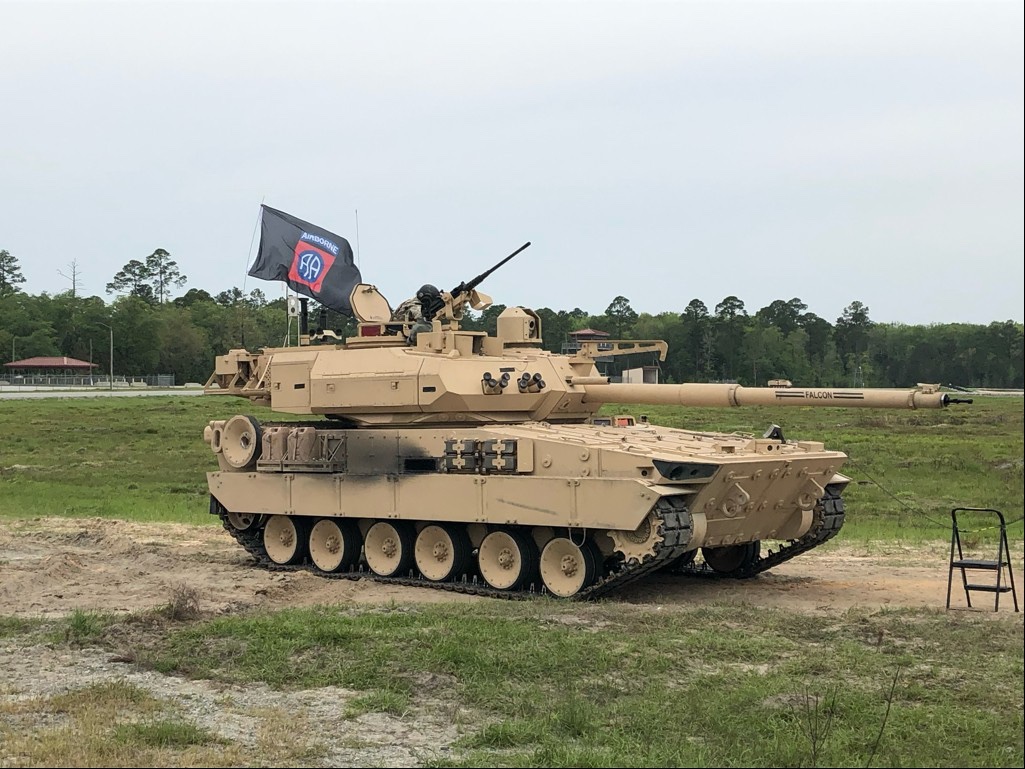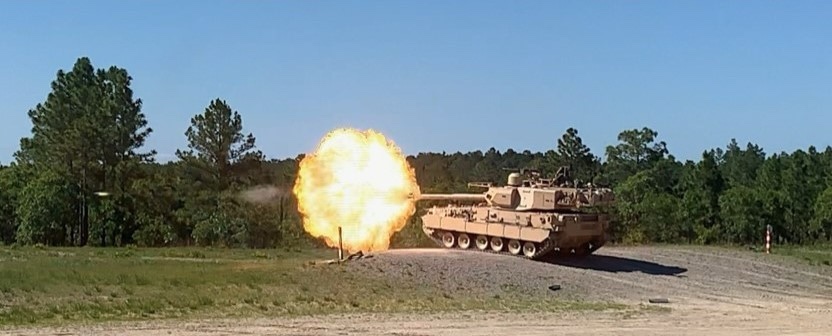WASHINGTON — The Army announced today the award of a $1.14 billion contract to General Dynamics Land Systems, Sterling Heights, Michigan, for the production and fielding of up to 96 Mobile Protected Firepower, or MPF, vehicles. The award comes just days after the Army closed out the MPF middle-tier acquisition rapid-prototyping phase and transitioned to a major capability acquisition program with a favorable Milestone C decision — an incremental step in the Department of Defense’s acquisition process that moves into the production and deployment phase.

MPF will provide infantry brigades greater survivability, the ability to identify threat systems earlier and at greater distances, and will not restrict movement in off-road terrain. MPF will also allow Soldiers to move at a faster pace, protecting the assaulting force.
“The MPF program did exactly what the Army asked, which was to complete a competitive and accelerated rapid prototyping effort with Soldier touchpoints,” said Mr. Doug Bush, Assistant Secretary of the Army for Acquisition, Logistics and Technology, and the Army’s acquisition executive. “MPF is a benchmark program, as the acquisition and requirement communities worked together to complete the [middle-tier acquisition rapid-prototyping] phase and move this system into production in just under four years.”
The Milestone C decision came on schedule and was underpinned by strong support and overwhelming commitment from Army leadership.
“MPF represents a new capability for the Army, allowing our light maneuver forces to overmatch adversaries. Through multiple Soldier touchpoints, our Soldiers have operated the prototypes and provided crucial feedback to the design team, ensuring our forces will have the asset they need on the future battlefield,” said Maj. Gen. Ross Coffman, director of the Next Generation Combat Vehicles Cross Functional Team.

During the middle-tier acquisition rapid-prototyping phase, the Army successfully tested and evaluated 24 prototypes during a pandemic. Middle-tier acquisition authorities allow the Army to have the flexibility to get prototypes into Soldiers’ hands quickly to enable fidelity on known risks and develop informed plans moving forward.
“Congress has provided us with flexible [middle-tier acquisition] legislation that allows for accelerated prototype delivery and Soldier operational feedback, which expedites the fidelity on technical and programmatic risks to better inform program acquisition decisions,” Bush said.
The MPF will be the Army’s first new design vehicle fielded in over four decades, with first unit equipped planned for late fiscal year 2025.
“Today’s announcement sets in motion an important modernization effort for the Army. As a team we’ve worked diligently to make certain we’ve taken the right steps early on to accept risk where appropriate and move faster,” said Brig. Gen. Glenn Dean, ASA(ALT)’s program executive officer for ground combat systems. “The Army is committed to delivering the MPF capability to the infantry brigade on an accelerated schedule with incremental improvements over time.”
During the low-rate initial production phase the Army will take delivery of MPF vehicles and conduct production qualification testing to include lethality, mobility, survivability, full-up system live-fire, and reliability, Availability and maintainability testing. Additionally, an initial operational test and evaluation will also be conducted, all leading to the first unit equipped. The award of subsequent low-rate initial production vehicle options will be based on review of cost, schedule and performance metrics defined in the acquisition program baseline.
By U.S. Army Public Affairs


Clank, clank … don’t you dare call it a light tank
/s/
FormerDirtDart,
My understanding is that this vehicle comes in at about 38 tons – about half the weight of an M1A2. A “Medium” rather than a “Light Tank” by most standards. The Sheridan was about 16 tons IIRC and the M41 – the last official US Army “Light Tank” from the 1950s-60s was about 25 tons. The C17 can deliver two of these at a time by airlanding, but not by parachute or LAPES. Interesting experiment, but I don’t think this is going to be the answer the Army is looking for. Unless they can shave off about 10-12 tons
TLB
Great point, hard to imagine loosening requirements for protection enough to get there though.
Very curious if it will have the same vibration/suspension issues as the UK’s Ajax vehicle as they’re both based on the ASCOD 2 platform
The other ASCOD derivatives don’t seem to have that problem, including other members of the Ajax family.
i wonder if these are meant to replace the M1128s and be part of cav or infantry units, or if they will fall under armor command.
My understand is that the initial plan is to add a Company to each IBCT CAV SQDN. However the Waypoint 2028 concept has entire MPF BNs held at the Divisional level sort of like a DIVArmor concept.
I would take a Bradley over this any day. Look at this Marketing claim:
“MPF will provide infantry brigades greater survivability, the ability to identify threat systems earlier and at greater distances“
Really? “Greater survivability”… how do you even support that claim?
Why not an M2A4 or M2A5 etc…
this may be more cost effective on the purchasing side but why not upgrade the Bradley. 100% this is for a Tanker with an Infatry MOS on their paperwork.
Brad’s got TOW’s and it doesn’t look like this does.
Maybe change out the 25mm if anything for different caliber but nothing this large.
This provides “tank support”, not great for urban fire support close proximity to friendlies. It’s like having a Mark19 on a Humvee trying to cover a team clearing a building… it sucks. You want the fifty instead. Sometimes new isn’t always better.